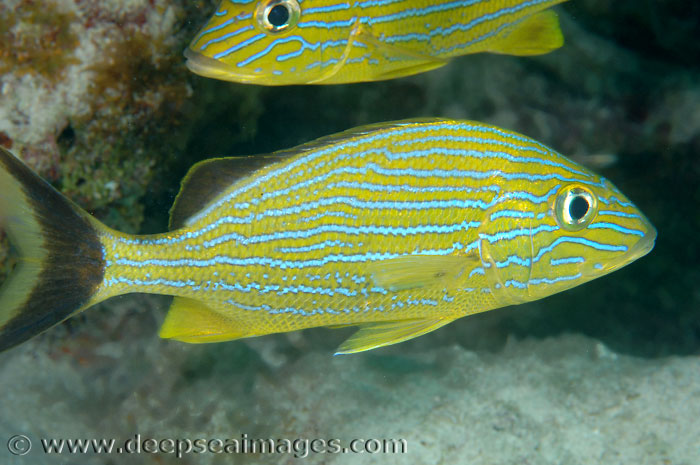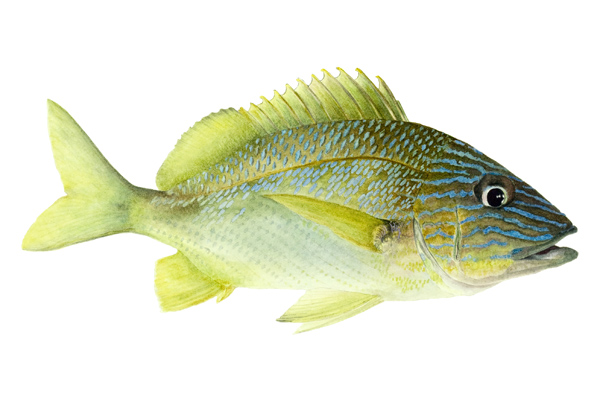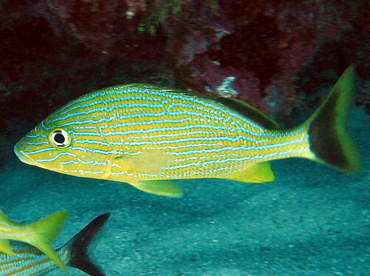
Haemulon sciurus
FAMILY
Haemulidae
TAXONOMY
Haemulon sciurus (Shaw, 1803), Antilles, Caribbean.
OTHER COMMON NAMES
English: Golden grunt, yellow grunt; French: Gorette catire;
Spanish: Ronco catire; Dutch: Neertje; Portugese: Biquara.
PHYSICAL CHARACTERISTICS
Typically perch or bass-like; the body color is yellow with a series
of blue stripes that run from the head to the caudal peduncle.
Fins are yellowish, except for the posterior portion of the
dorsal fin and also the caudal fin, which are black. The caudal
fin margin may be yellow. There are 12 spines and 16–17 soft
rays in the dorsal fin, and 3 spines and 9 soft rays in the anal
fin. The caudal fin is emarginate. Grows to about 18 in (46
cm) in total length.
DISTRIBUTION
Western Atlantic, from Florida south to northern Brazil, west
through the Gulf of Mexico and throughout the Caribbean.
HABITAT
Juveniles are found in Thalassia sea grass beds. Adults occur
over coral and rocky reefs and near drop-offs. Depth range is
3–98 ft (1–30 m).
FEEDING ECOLOGY AND DIET
Mainly nocturnal predators of crustaceans, bivalves, and small
fishes.
BEHAVIOR
Forms small groups that migrate twice daily along predictable
routes at dawn and dusk. Knowledge of the locations of these
routes has been demonstrated to be transmitted culturally by
older fishes to younger ones in a related species.
REPRODUCTIVE BIOLOGY
Little is known. Likely forms spawning aggregations at predictable
locations annually (autumn through spring, probably
around the full moon); spawning is doubtless pelagic, as are the
eggs and larvae.
CONSERVATION STATUS
Not listed by the IUCN.
SIGNIFICANCE TO HUMANS
A minor commercial and recreational species; also collected for
the aquarium trade and for public aquaria. Ciguatoxic in some
areas.
Other popular Animals
Photo Gallery of - Bluestriped grunt





 Animalia Life
Animalia Life